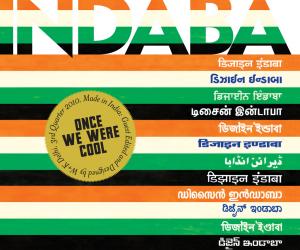First Published in
Almost every piece of contemporary furniture in India’s burgeoning luxury market is either a Western import or a locally manufactured imitation of the same. India’s heritage of craft skills in furniture-making is disregarded within the Indian milieu. While the uniqueness of Indian handcrafted furniture is in demand in the West, it is redundant within India, a country on the verge of modernisation seduced by Western imagination and machined perfection.
Although Indian cabinet making is less well-known than Indian textiles, sculpture or painting, it has enjoyed a very rich tradition. Vasco da Gama arrived in India in 1498 and what followed was a period of great cultural fusion between the East and the West. It was a mutually beneficial period of “fair trade” when two divergent cultures coalesced into objects of great beauty, the influence of which is still strong over 400 years later. It is interesting to note that prior to the European arrival, Indian society principally sat cross-legged on textiles placed on the floor; this posture in which people socialised and ate, determined the design of the objects that surrounded them.
Thrones, which in their very design were aimed at raising the ruler above the ground, were the only form of elevated furniture. India had a lavish tradition of decorating royal seats that were wrapped in sheets of gold and silver and studded with precious stones. Thrones became the ultimate symbol of Indian luxury. Awed by these rich traditions and the absence of local infrastructure to manufacture Western-style elevated furniture, the European settlers commissioned local craftsman to make basic forms along European lines, allowing them to draw freely from their own material culture. This cross influence of craft and technique gave rise to a wide range of breathtaking luxury goods and to craftsmanship that became highly sought after in the West. During this period, Indian cabinet-making was at its peak.
At the turn of the 19th century there was a shift in the power equations between the two cultures; these objects were labelled as “stylistically confused” by the Europeans and rejected by the Indian elite in favour of European goods, representative of status and authority, a condition that still prevails in Indian society. This marked a sharp decline in the patronage and production of Indian luxury goods. What remained was the affordable and hardy hardwood furniture made for the peripatetic population of officials, and Indian furniture came to be recognised through this aesthetic. Indian luxury craft was reduced to mere nostalgia and the exquisiteness and dexterity of the artisan were replaced by synthetic substitutes and shoddy workmanship.
This apathy of Indian craft within the luxury context is extremely relevant in view of the changes in consumer behaviour and the global production scenario. The advent of the 21st century has put India in a very strong position both economically and culturally, but while the country is marching towards claiming her global superpower status, she has yet to make a mark on the cultural front.
Although there is a lot of “Made in India”, there exists very little of Indian design in the international context. The country manufactures for almost every top luxury brand in the world but it is most recognised through the cheap and cheerful segment of the Western market: Indian handmade goods are rarely promoted for their fine craftsmanship or cultural value, but rather regarded as cheaper and exotic alternatives to the problem of standardisation and mass manufacturing. This greatly affects quality and is demeaning to the local artisan.
The export system is largely responsible for the overall messy condition of craft in India. Export enterprises treat crafts as a form of “mass production” by “hand production processes.” This approach has had devastating effects on the centuries-old decorative motifs and skill of the artisans as entire craft-producing communities have been trained to rapidly manufacture endless identical copies of a single product. Quality is considered a prerogative of the machine made products of the West and handmade is considered inferior, and this mindset is preventing India from entering the global arena as a luxury producer. In redirecting the export markets to produce “class” instead of “mass”, the problem of quality with “Made in India” products could be resolved.
Master craft in India is a celebration of fine artisanal hand skills that manifest themselves through materials and in forms and patterns that are only incrementally changed over generations of practice; at their best they are as achingly beautiful to contemporary eyes as they would have been to the eyes that relished them centuries ago. They are timeless and they currently suffer from frozen time, from the benign but misguided idea that they must be preserved and fossilised to be saved for future generations; yet they need to continue to move forward through time to survive as a living tradition.
In view of the changing global identity of luxury, especially in relation to the handmade and bespoke, Indian design has a great chance at setting the example for a sustainable and ethical form of quality production. The problem of quality with “Made in India” products could be resolved by redirecting the export market to produce “class” instead of “mass,” by engaging with historical craft communities that are in a state of degeneration and by attaching contemporary design values to bring them onto the global platform for social and economic welfare.
Gunjan Gupta is a product and interior designer based in New Delhi. She founded Wrap Art & Design in 2006 and preserves Indian craft through her practice.






































